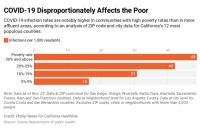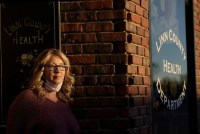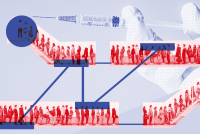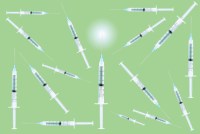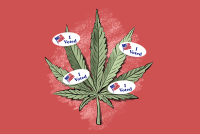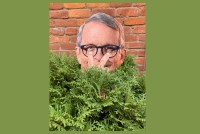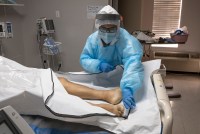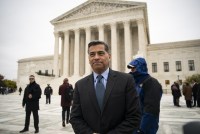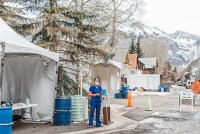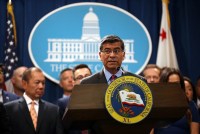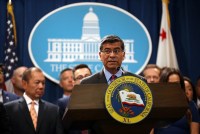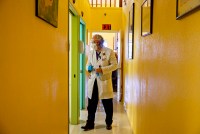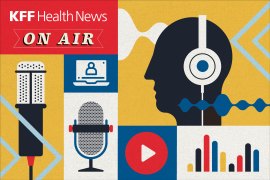Latest KFF Health News Stories
Behind Each of More Than 300,000 Lives Lost: A Name, a Caregiver, a Family, a Story
Family members and health care workers say the statistic of 300,000 lost Americans cannot capture their grief or anger at the apathy they’ve encountered from those who minimize the dangers of the coronavirus. “The numbers do not reflect that these were people,” said Brian Walter, who lost his father.
High-Poverty Neighborhoods Bear the Brunt of COVID’s Scourge
COVID infection rates in California are consistently higher in low-income neighborhoods than more affluent areas, according to an analysis by ZIP code. Our findings underscore the heightened risks borne by millions of low-wage workers whose jobs are deemed essential.
Pandemic Backlash Jeopardizes Public Health Powers, Leaders
At least 181 public health leaders in 38 states have resigned, retired or been fired amid the turmoil of the pandemic. The departures come as backlash against public health is rising with threats to officials’ personal safety and legislative and legal efforts to strip their governmental public health powers.
Agrícolas, bomberos y azafatas buscan estar entre los primeros en recibir la vacuna
Trabajadores de salud de primera línea, y residentes y personal de hogares de adultos mayores, recibirán las dosis de la vacuna contra COVID primero, pero… ¿quiénes le seguirán?
This Health Care Magnate Wants to Fix Democracy, Starting in Colorado
Kent Thiry, the former CEO of dialysis giant DaVita, has clear ideas about how democracy should work. By backing ballot measures in Colorado, he’s shaping the power of voters in that state.
Supply Is Limited and Distribution Uncertain as COVID Vaccine Rolls Out
Hospitals and nursing homes must decide who gets the initial doses as the U.S. heads into the biggest vaccination effort in history. There’s a lot left to figure out.
Farmworkers, Firefighters and Flight Attendants Jockey for Vaccine Priority
Everyone — from toilet paper manufacturers to patient advocates — is lobbying state advisory boards, arguing their members are essential, vulnerable or both — and, thus, most deserving of an early vaccine.
A Battle-Weary Seattle Hospital Fights the Latest COVID Surge
Harborview Medical Center was at the epicenter of the first wave of coronavirus in the U.S. Staffers have a better understanding of the disease as cases surge, but fatigue and a lack of backup staff are big challenges.
Dialysis Industry Spends Millions, Emerges as Power Player in California Politics
Over the past four years, the dialysis industry has spent $233 million on both political offense and defense in California. Most of it went toward protecting its revenues against ballot initiatives, but the industry also strategically worked the corridors of the state Capitol.
As More Red States Legalize Marijuana, Some Officials Try to Nip It in the Bud
Recreational marijuana may face resistance from GOP-dominated state governments despite being voted into law in Montana, South Dakota and Arizona.
With Pandemic Surging, Ohio Gov. DeWine Dials Back His Aggressive Response
The governor won praise around the state for his early efforts to combat the coronavirus, but as the crisis wore on and President Donald Trump played down the threat, Ohio Republicans began to grow restless with DeWine’s stance, and concerns for his reelection campaign in 2022 are rising.
It’s Time to Scare People About COVID
Our public messaging about the virus should explain the real costs — in graphic terms — of catching the virus.
Becerra, un candidato para el HHS con habilidad política pero sin experiencia en salud
La experiencia de Xavier Becerra no proviene de la salud o la ciencia. Pero tiene una larga trayectoria política ligada a las luchas por la equidad en salud.
Voces de la comunidad para rastrear contactos de COVID entre latinos
Las disparidades en la atención de salud de larga data, la inseguridad laboral, el estatus migratorio, las barreras del idioma, entre otros, complican la ya difícil tarea
In Becerra, an HHS Nominee With Political Skill But No Front-Line Health Experience
Despite his lack of front-line experience, Democrats see the California attorney general as an important ally to shepherd a progressive agenda on the Affordable Care Act, Medicaid, reproductive health services and immigration.
Tracking COVID’s Spread Inside a Tight-Knit Latino Community
Contact tracing for COVID-19 in a Latino immigrant community has some unique challenges. But as public health officials in Telluride, Colorado, are showing, using resources from inside those communities can help track and contain the coronavirus.
A Child’s Death in the Heartland Changes Community Views About COVID
As America enters a dark winter with no national directives against COVID-19, Washington, Missouri, faced the same dilemma numerous other communities are grappling with: enact restrictions to curb the pandemic or leave people to their own will? Then a local 13-year-old died.
Xavier Becerra en sus propias palabras: “La atención de salud es un derecho”
El presidente electo Joe Biden eligió al fiscal general de California, Xavier Becerra, para dirigir el Departamento de Salud y Servicios Sociales (HHS). Como fiscal general y durante sus 24 años en el Congreso, Becerra ha sostenido posiciones progresistas en cuestiones de atención de salud, peleando contra la administración Trump sobre planificación familiar, demandando al mayor sistema de salud de California por conducta monopólica, y definiendóse como un defensor del sistema de salud de pagador único.
Xavier Becerra in His Own Words: ‘Health Care Is a Right’
California Attorney General Xavier Becerra is President-elect Joe Biden’s pick for U.S. Health and Human Services secretary. As attorney general and during his 24 years in Congress, he has staked progressive positions on health care issues, fighting the Trump administration on contraception, suing a major California health system for monopolistic behavior and calling himself a supporter of single-payer health care.
California Lawmakers to Newsom: Give All Immigrants Health Coverage
Given the pandemic’s disproportionate hit on minority communities, two Democratic lawmakers are pushing Newsom to agree to offer health care to all unauthorized immigrants. They planned to unveil legislation Monday — and a new strategy to make it happen.




